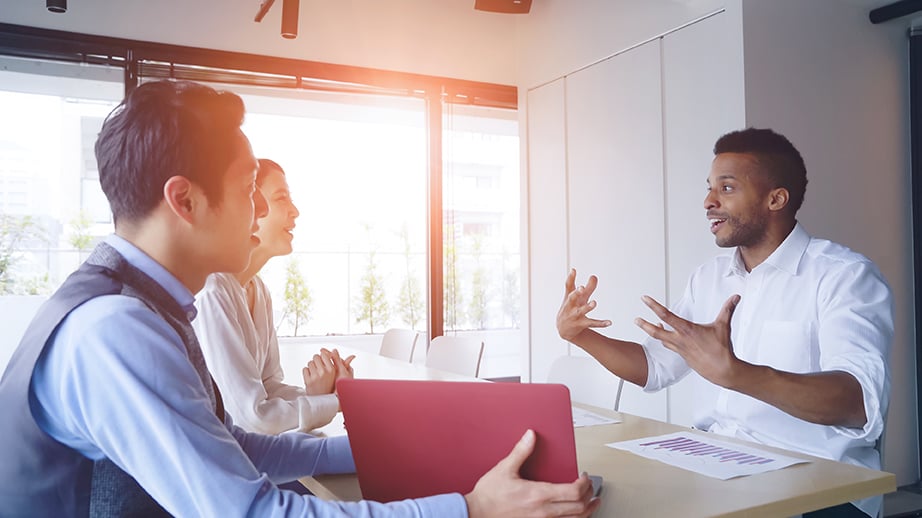
This article was posted as original content on the ACEDS Blog and written by Gavin W. Manes.
Our last blog post discussed the 5 C’s of communication and how Clarity, Conciseness, Compelling, Curious, and Compassionate discussions can improve legal technology communication.
This post discusses communication’s close companion: listening. Particularly in a field like legal technology, with its jargon and industry shorthand, fully understanding what others are saying is even more important. In fact, it’s said that this is one of the best ways to improve business skills across the board, not just in the legal field. So how can listening be improved? Why is it important in eDiscovery? And what are the actual benefits? Read on…
Active Listening
You might have heard of something called ‘active listening’ and although it’s a bit of a buzzword, there are substantial benefits to it. Here are the five steps, adapted for legal professionals:
- Listen to what the speaker is saying about their matter (or issue, if it’s a discussion with a vendor)
- Restate what was said
- Ask open questions
- Acknowledge any emotions
- Ask “what else?”
Clients, vendors, and lawyers have all been guilty of blazing through a few of these because we think we know what is going to be said. If a case follows a pattern we’ve seen before, it’s very easy to make it fit that box rather than acknowledging each case on its own. But this can mean missing crucial elements of intaking a new client, asking about productions from a vendor, or talking to another member of the litigation team in a strategy meeting.
Why is it Important in eDiscovery?
eDiscovery cases involve vast amounts of electronically stored information, making active listening crucial to understanding the case, identifying relevant evidence, preserving its integrity, and formulating effective legal strategies. The ability to listen effectively throughout the eDiscovery process can significantly impact the overall success of the case.
Because eDiscovery is a technical field, it’s particularly important to get terminology right. Fortunately, steps one, two and three from above help address that, by listening carefully, restating, and asking questions about whether the words you are using mean the same thing to the other party. In our last blog post, the example about miscommunication involved using the words ‘export’ and ‘production’ interchangeably. This is a simplistic case, but other listening-based misunderstandings can go far deeper.
Nowhere is this truer than the burgeoning legal applications of artificial intelligence and automation. These are highly complex processes, and it is crucial to listen very carefully to what computing capabilities are best used for a particular set of case circumstances. This may mean being willing to ask “dumb” questions and actively listen (using the above principles) to those who are very familiar with machine learning. Since we interact with technology, computers, and AI on a daily basis, it’s easy to believe that we understand it better than we do. A large part of listening is to actively seek the smartest person in the room on a particular topic, ask them questions, and listen carefully to the answers. Listening to experts results in a robust understanding of the eDiscovery capabilities of whatever tool or workflows you may be using, and can immediately lead to benefits in terms of cost and time.
From a document review standpoint, efficiently listening to clients and understanding the scope of the case allows attorneys to streamline the eDiscovery process. Reviewing relevant, non-duplicative data is the gold standard in document review, and working to listen at the beginning can help ensure this is the case. This means listening from the client side, from the attorney side, from the litigation support side, and from the vendor side.
Listening to Save Money
The idea of saving time in document review rolls right into the next idea, and that is listening as a cost saver. Not understanding or hearing something can be the same as overlooking a document in a review. More collaboration and more communication comes into play to get the project back on track, so it’s easy to draw a straight line between understanding in the first place and not having to redo any work, or call any more meetings.
This is true whether it’s the beginning of the case or if it’s all the way to production. More effective legal strategies can be created when the client’s goals, concerns, and preferences and thoroughly understood. eDiscovery vendors or litigation support teams can be more effectively leveraged if everyone understands what the case is about and what their part of the process is going to fit.
Conclusion
The ultimate message with many tips on listening comes down to one phrase “listen to learn, not to respond.” Practicing the art of listening will result in efficiencies in eDiscovery, legal technology, the practice of law, and other areas of business.
What did you think? Any good takeaways about listening, legal work, or eDiscovery? Let us know here.
Related Posts
The Lit Hold is Over - What Next?
This article was posted as original content on the ACEDS Blog and written by Gavin W. Manes.
So...
Both Sides of the Coin: Employment Separation
This article was posted as original content on the ACEDS Blog and written by Gavin W. Manes.
...
Everything's New - Except Production Formats
This article was original content on the ACEDS Blog and written by Gavin W. Manes.
Historically,...

